Rollin’ Bones
By Alex Branch
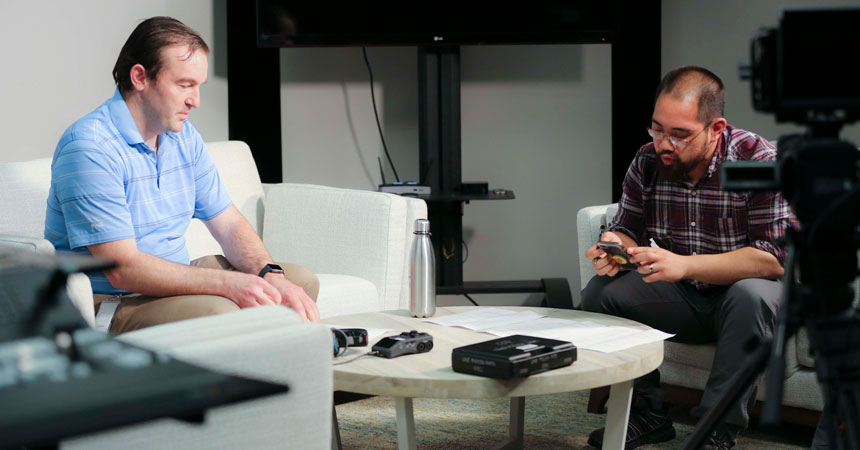
Osteopathic physicians James Aston and Dante Paredes sit on sofas in an UNT Health Science Center media studio and confront the tricky part of today’s podcast:
How to discuss lymphatics so that people understand it — and stay awake.
The lymphatic system is a large network of vessels that carry a clear fluid containing infection-fighting white blood cells through the body.
“The image that comes to my mind is the Mississippi River,” Dr. Aston offers. “It’s this huge system that splits the United States and drains a significant amount of water and nutrients from all over the heartland.
Rollin’ Bones podcastThe podcast can be downloaded on major broadcasting platforms, such as Apple Podcasts, Spotify, Google Play Music, Stitcher. New episodes are released every other Wednesday. The next episode will be available April 10 |
“I like it,” Dr. Paredes says. “It stirs up the nourishment imagery and the drainage imagery.”
“I guess this will be the ‘A River Runs Through It’ episode,” Dr. Aston says, chuckling.
Their producer, Rob Upchurch, counts down from five and points at Dr. Aston. Speaking into a microphone clipped to his shirt, Dr. Alston says, “Welcome to Rollin’ Bones, the Osteopathic Podcast…”
So begins the next episode of what, as far as Dr. Aston and Dr. Paredes can tell, is the first podcast devoted to Osteopathic Medicine and Osteopathic Manipulative Treatment (OMT), the hands-on style of care specific to osteopathic doctors – known as DOs.
The physicians, both resident doctors in the UNTHSC Texas College of Osteopathic Medicine, are determined to pull back the curtain on the power of OMT by discussing the conditions it can treat, the philosophy behind its approach and the science that supports it.
Share stories, not numbers
So far, three Rollin’ Bones episodes have been published, and the podcast has almost 600 unique downloads. Not bad, considering their marketing efforts thus far have consisted of Instagram and Twitter pages and handing out Rollin’ Bones business cards at an American Academy of Osteopathy meeting.
“We came into this without any experience at all with podcasts, so we’ve been pleasantly surprised by the reaction,” Dr. Paredes said.
The physicians collaborated on the project with Sajid Surve, DO, UNTHSC Associate Professor of Family Medicine and OMT; Brenda Jaskulske, a Principal Lecturer in the University of North Texas Department of Media Arts; and Rob Upchurch, a UNT Media Arts graduate student.
As producer, Upchurch handles the equipment, edits each episode and coaches the physicians on how best to communicate complicated medical information. “Share stories, not numbers” is a guiding principle.
“A good podcast needs a format,” Upchurch said. “You can’t just turn on a microphone and go. We work together to make sure the content is structured to produce the best product. These guys learn fast.”
An idea man and a reactor
Creating the podcast, physicians fell naturally into their roles that, in a sense, resemble those of a play-by-play commentator and color commemorator announcing a football game.
“Dr. Parades is our conversation generator,” Dr. Aston said. “I’m the reactor. I react to the ideas he is expressing. He reacts to what I say and soon we get a pretty good banter going.”
Topics covered in the initial episodes include the origins of osteopathic medicine, back pain and conditions affecting the ankles and knees. The positive impact osteopathic manipulative treatment can have on each condition is the common thread.
Consider the lymphatic system, which fights off infection and keeps our body fluids in balance. If it’s not working right — perhaps because of an infection — fluid will build in body tissue and cause swelling. Osteopathic physicians can drain that extra fluid by performing OMT.
In fact, a common hazard for hospitalized patients with chronic obstructive pulmonary disease (COPD) is fluid pooling in their lungs, Dr. Aston said. Osteopathic manipulative movements can drain that fluid out of the lungs and help patients breathe easier.
During the 1918 influenza epidemic, osteopathic hospitals improved patients’ mortality rates by including OMT into the care provided, Dr. Aston said. That’s just one example of the interesting but little known facts listeners learn from Rollin’ Bones.
“The Health Science Center has one of the premier osteopathic medicine programs in the country,” Dr. Aston said. “But if you walk down a street in Texas and ask the average person what osteopathic medicine is, too many have no idea. We’d like to change that.”
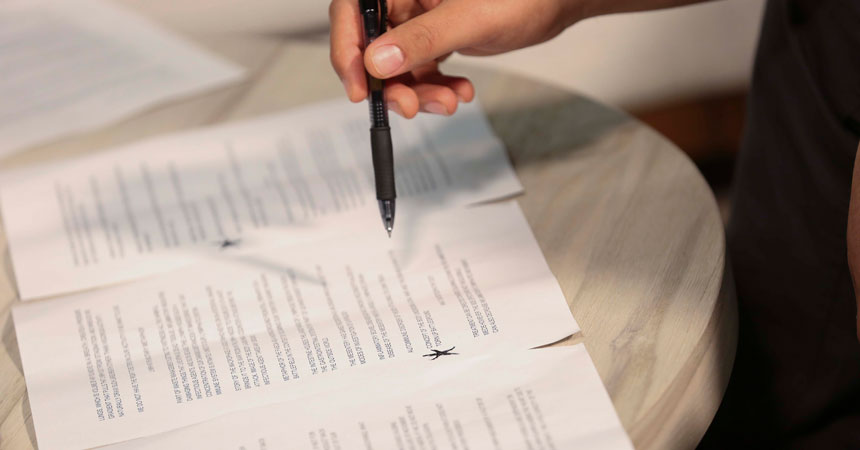
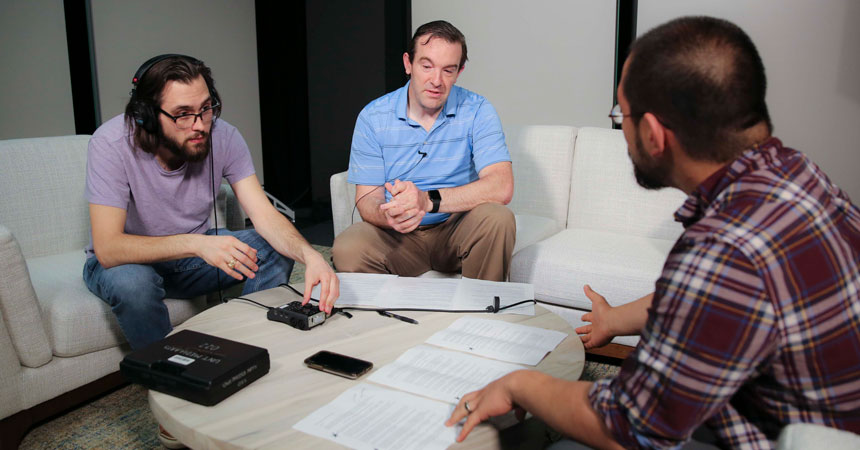
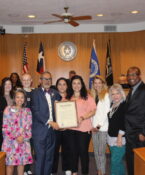

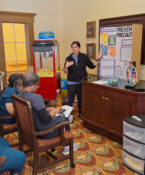
![Uyen Sa Nguyen Scaled[58]](https://www.unthsc.edu/newsroom/wp-content/uploads/sites/16/Uyen-Sa-Nguyen-scaled58-145x175.jpg)

Social media